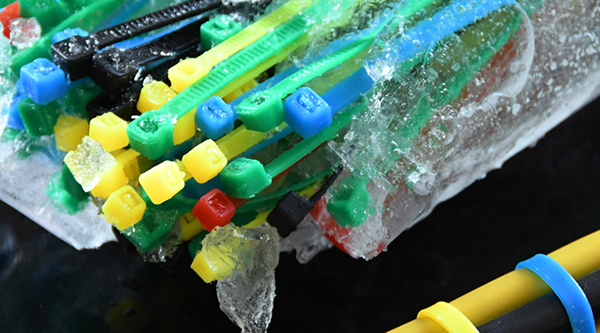Cable ties, also known as zip ties, are fasteners used to bundle and secure cables and wires. They are made of nylon or plastic and come in various sizes and colors. Cable ties are commonly used in industries such as construction, automotive, and electronics. Cable ties are a common sight in many businesses, used to organize and secure cables, wires, and other equipment. However, improper installation of cable ties can lead to serious safety hazards. Improperly installed cable ties can cause a variety of hazards, including electrical shock, fire, and physical injury.

Electrical shock
Cable ties that are too tight or too loose can damage the insulation on wires, exposing them to electrical current. This can lead to electrical shock, which can be fatal. Properly installed cable ties ensure that wires are securely fastened without damaging the insulation.
Fire
Cable ties that are too tight can also cause friction between wires, which can generate heat and potentially start a fire. Additionally, cable ties that are made of flammable materials can contribute to the spread of fire. Properly installed cable ties prevent wires from rubbing against each other and ensure that non-flammable materials are used.
Physical injury
Improperly installed cable ties can also pose a physical hazard. Cable ties that are too tight can cut into wires, causing them to break or short circuit. This can lead to equipment failure or injury to employees. Additionally, cable ties that are too loose can become entangled in machinery, causing damage or injury. Properly installed cable ties prevent these hazards from occurring.
How to properly install cable ties
Proper installation of cable ties involves several steps:
1. Choose the right size and material
Select cable ties that are appropriate for the size and weight of the cables or wires being secured. Additionally, choose cable ties that are made of non-flammable materials.
2. Position the cable tie
Position the cable tie around the cables or wires, ensuring that it is not too tight or too loose. The cable tie should be snug but not so tight that it damages the insulation or cuts into the wires.
3. Cut the excess
Cut the excess length of the cable tie using a cable tie cutter or scissors. Be careful not to cut into the cables or wires.
4. Inspect the installation
Inspect the installation to ensure that the cable tie is properly secured and that there are no loose wires or cables.

Proper installation of cable ties is essential for the safety of your business. Electrical shock, fire, and physical injury can all result from improperly installed cable ties. By following the steps outlined above, you can ensure that your cable ties are properly installed and that your business is safe.For more information on cable ties and other safety products, visit our website at chinaxut.com.







